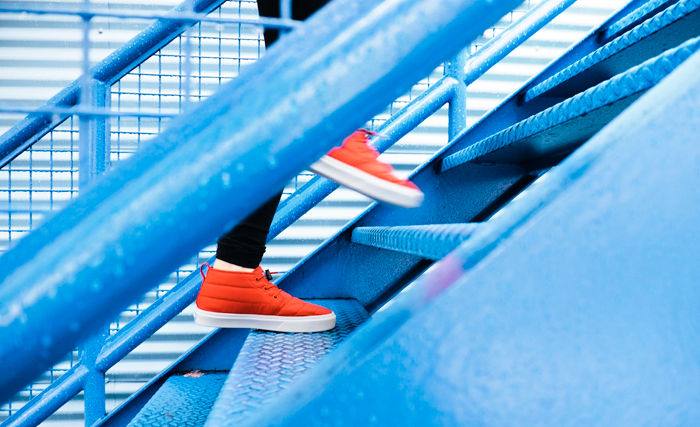Corporate wellness programs offering financial and other bonuses have been around for some time. But Manulife is now taking the next step by putting an incentives-based wellness program on its life insurance shelf, hoping it will have a “dramatic impact” on its competitive position in the marketplace.
Starting Sept. 27, Manulife began offering to clients T-20 and T-65 Vitality life insurance policies with coverage of $500,000 to $20 million. In exchange, they will receive an automatic 10% discount in premiums, although they will also pay a $2 a month premium for Vitality.
Personalized health goals
Clients who sign up for the product receive a list of personalized health goals, some tips and a free Garmin to track their progress. Their health habits, including physical activity, seeing their dentist once a year and taking online educational courses, are screened once a year to receive points. The more points, the more the likelihood of getting an additional cut in premiums.
Manulife’s U.S. division, John Hancock, started offering Vitality in April 2015 and expanded the program this year to include a “healthy food” component that rewards policyholders for buying healthy food in a country where 26% of deaths are blamed on poor diet.
John Hancock does not disclose sales figures of its individual products. “[However] Vitality has very quickly become a very material piece of our new business, it is being selected on all our different product types and it is appealing across virtually all customer segments – from young families, to retirees,” said a company spokesman.
Smart devices and apps
A March 2016 survey by LIMRA indicates an increasing number of people are using smart devices and apps to track their medical and physical activity “creating opportunity in the life insurance arena.”
Most of those who would consider using a device or app say that financial savings, like a drop in premiums or incentives toward travel, shopping and entertainment, are major reasons to share activity tracker results, said the survey.
The survey noted that 30% of people are very or extremely likely to consider wearing an activity tracker (like Garmin or Fitbit) and sharing results with a life insurance company in return for financial rewards for healthy behaviours. Another 36% said they were completely unlikely to consider sharing activity tracker information with a life insurer.
People were less likely to share smart scale (tracking weight, body fat and body mass index) results with an insurer with only 27% saying they were very or extremely likely to consider it.
Millennials (those born 1981-1996) were more likely to be attracted to the idea of using either or both an activity tracker and a smart scale, according to the survey.
While the LIMRA numbers point to younger Americans as those more likely to be drawn to Vitality, John Hancock’s experience has shown that the average age of clients buying Vitality is 50. One of the first people to call in to John Hancock’s customer service line to inquire about Vitality was 71.
30-year low
The launch of Vitality in Canada comes during a 30-year low in the number of household purchases of life insurance. But Rob Hollingsworth, vice president and head of sales insurance for Manulife, told a group of financial advisors that this will be a product that clients will want to talk about with their financial advisors.
Advisors should see Vitality as a way to increase their value proposition while helping clients maintain a healthy lifestyle. And, said Hollingsworth, it should also result in more sales for advisors, partly because of the increased interaction with clients.
The Vitality program is based on a point system of bronze (0 points), silver (3,500 points), gold (7,000 points) and platinum (10,000 points). While anyone who buys a Vitality life insurance product will get an automatic 10% discount, they can achieve greater reductions in price if they reach the platinum level when they are screened on the policy anniversary date.
Screening can take place at a doctor’s office with proof of information, but Manulife is also working to partner with a company that will send a representative to a client’s home and screen them there.
If a client receives 7,000 points a year or less, premiums will rise annually to the point where they hit a ceiling, said Michael Dawson, product director, retail sales, Manulife. But he said that in the end, the policy will not cost more over 20 years than had the client purchased the same level of coverage and term without Vitality – except for the $2 a month premium.
Premium floor
There is also a premium floor for those who continue to post platinum points.
At some point in the future, Manulife expects to build out Vitality to include not only life insurance, but also other products like living benefits.
Historically, life insurance has distinguished between levels of health only once – when a client signs up for a product, said Blake Hill, head of Manulife Vitality, strategy.
Property and casualty insurers, however, are different, realizing that people can change their lifestyles. (Desjardins, for example, has its well-publicized Ajusto app that allows drivers to improve and track their driving and potentially save as much as 25% on their insurance. Allstate also rewards safe driving with deductible rewards and accident-free discounts.)
The addition of Vitality now also encourages people to move to a healthier lifestyle and be rewarded as they take on a healthier lifestyle, said Hill.
Vitality products are sold to life insurers in the United Kingdom, South Africa, China, Singapore and Australia in addition to Canada and the United States.
![]()
![]()
![]()




